1 - Expected post-Chinafy results
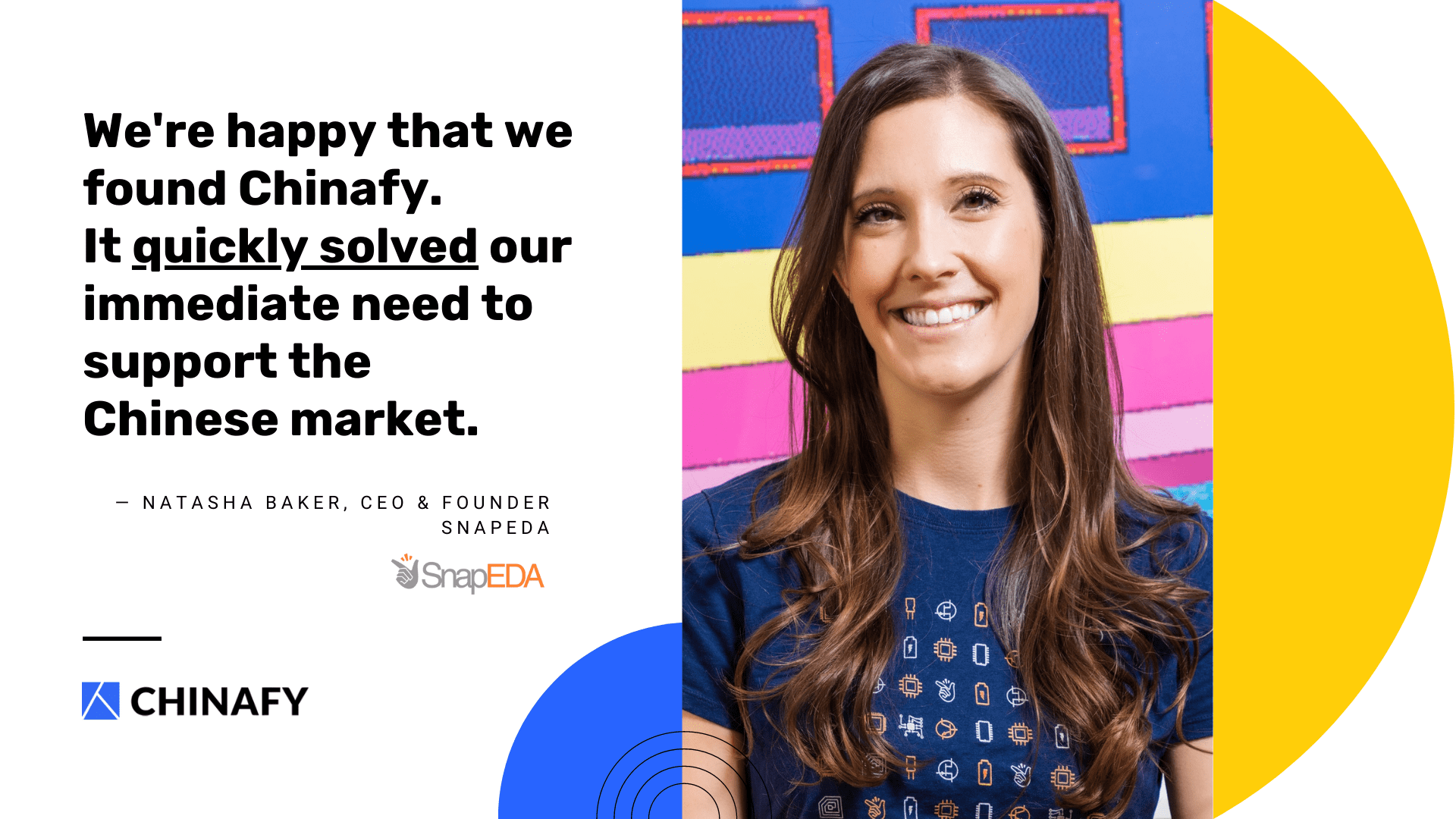
Over 1 million engineers use SnapEDA each year all over the world. We were attracted to Chinafy's service because of how easy they made it to support the Chinese market.
– Natasha Baker, CEO & Founder of SnapEDA
About SnapEDA
SnapEDA is the internet’s first electronics design library, with the world’s largest repository of downloadable parts.
SnapEDA is a critical tool for over 1 million engineers around the world — from those that work in Google, Facebook, Samsung, to midsized companies creating unique hardware products for various purposes.
More specifically, SnapEDA’s platform allows engineers to create Schematic Symbols and PCB Footprints, both of which are necessary for designing individual parts and assembling them into a system. Their platform also supports downloading these symbols and footprints in the formats of popular electronics design software, including Altium and Eagle.
The Website
Headquarters: United States
Industry: Technology
Website CMS: Custom
More specifically, SnapEDA’s platform allows engineers to create Schematic Symbols and PCB Footprints, both of which are necessary for designing individual parts and assembling them into a system. Their platform also supports downloading these symbols and footprints in the formats of popular electronics design software, including Altium and Eagle.
SnapEDA’s relevancy for engineers is no exception in China.
However, because of the bifurcation of the global and Chinese internet, SnapEDA’s attempts to reach Chinese engineers were met with some challenges.
The Challenges
Like all foreign sites in China, SnapEDA encountered slow loading times and incomplete pages when accessed from China.
The page would take over 20s to fully load on average. During high traffic periods, the site would not load at all.
Downloading symbols/footprints, searching for parts, and interacting with other engineers became a challenging experience for visitors accessing the site from China.

On the SnapEDA platform, many of their footprints didn’t load consistently.
Chinese customers had to use a VPN when using the SnapEDA platform. As a practice highly discouraged in China, this wasn’t sustainable for SnapEDA users.
Objectives
A high-performance platform that enables the seamless creation of symbols and footprints
A fast-loading website that enables a smooth search experience across the entire repository and allows efficient download of parts
Easy online community interaction between engineers in China and those in the rest of the world
The Results
Before Chinafy: 26.2s average loading time
After Chinafy: 6.1s average loading time — over 4x faster!
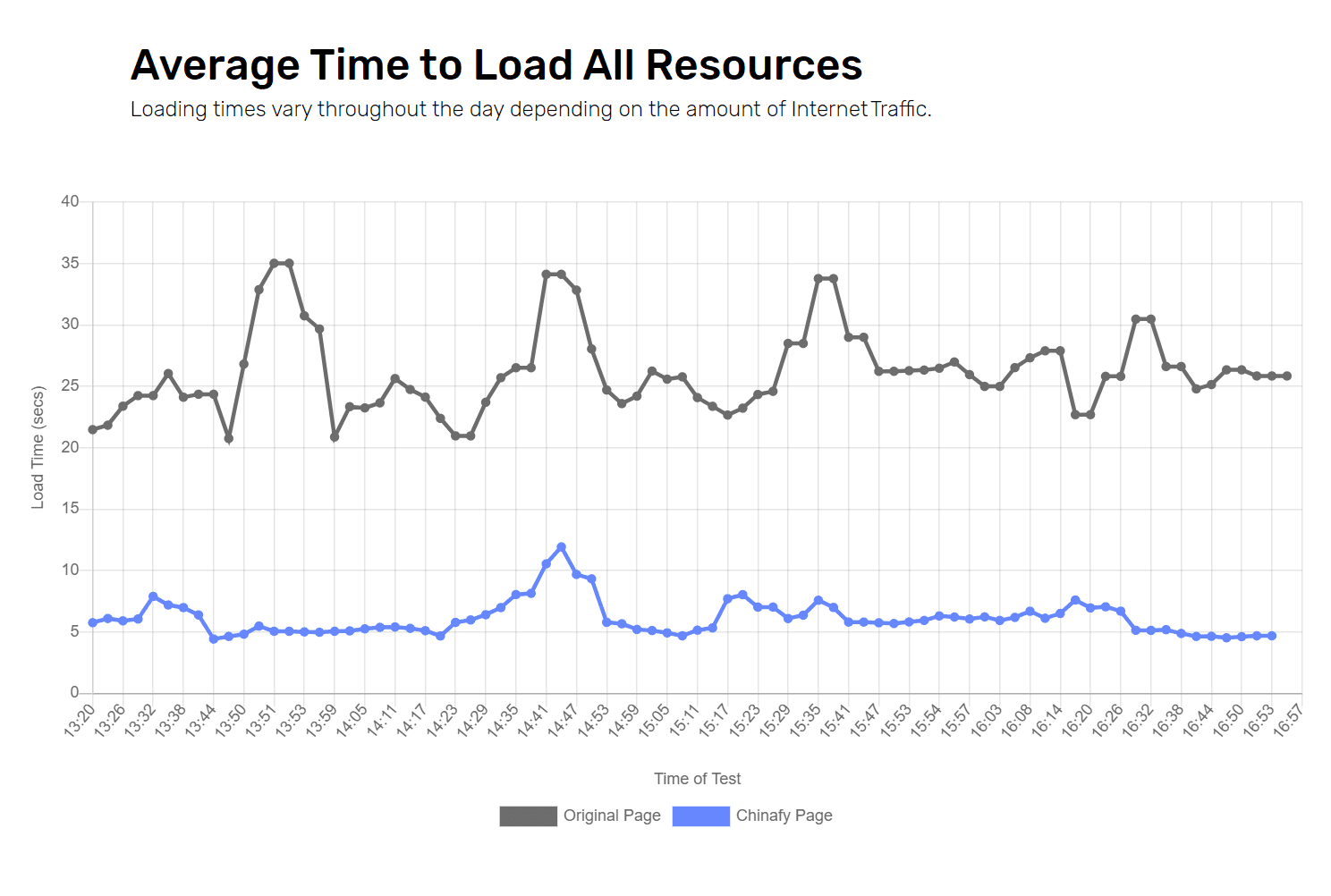

After the Chinafy optimization process, the SnapEDA team was also able to extend a great user experience to engineers in China as intended, just as they do for engineers globally.
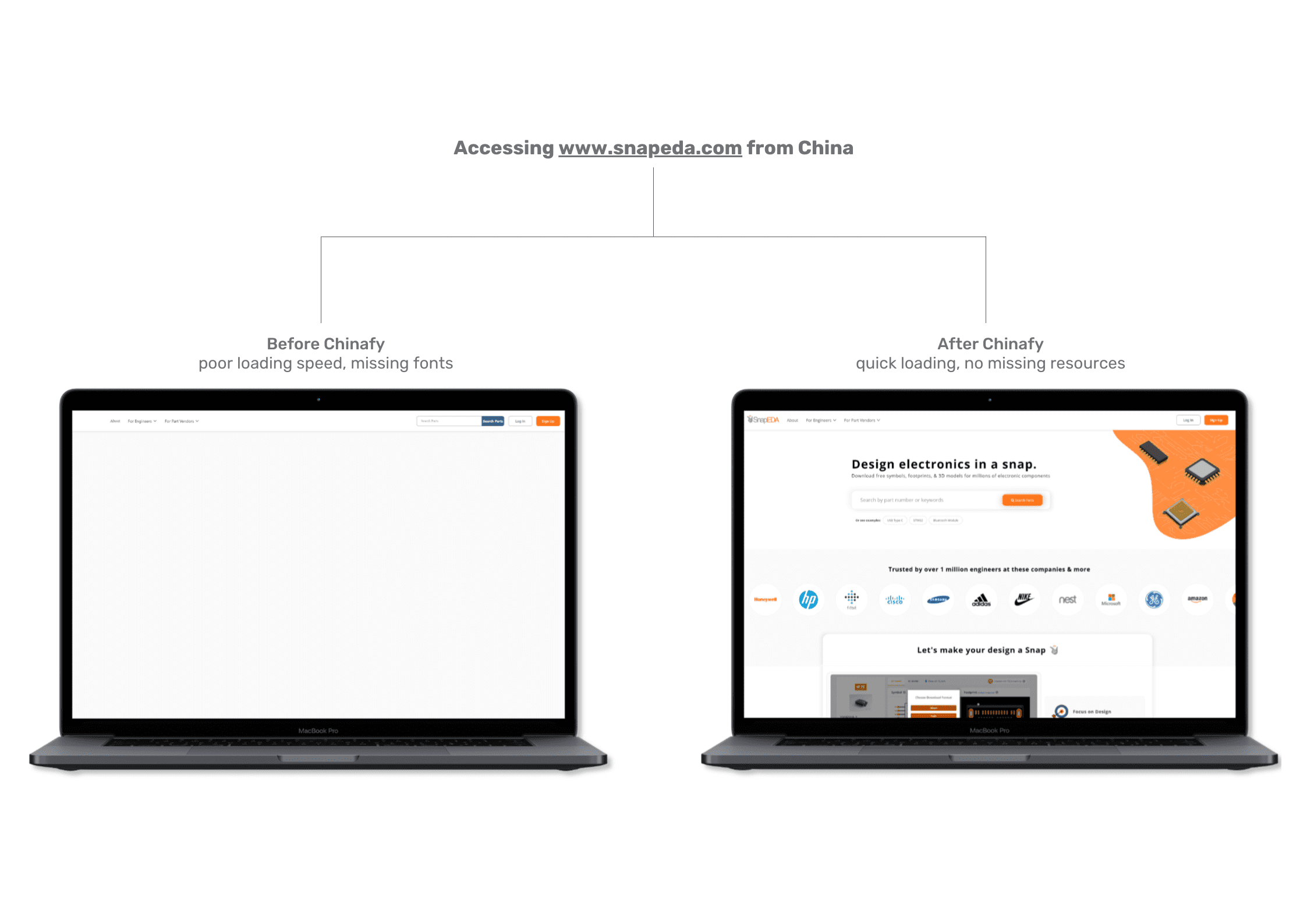
Namely, the SnapEDA site are now able to —
Efficiently extend their symbol and footprint creation platform to Chinese engineers as designed
Speed up the site, boosting everything from search to downloads
Ensure that essential functions such as Google Analytics can operate in China as intended
Increase the community participation of engineers in China
Continue updating their site from the United States with ongoing optimization powered by Chinafy
Don’t just take our word for it, hear it from SnapEDA ?
Meet Natasha Baker, CEO & Founder of SnapEDA
Why Chinafy?
SnapEDA is a global platform for designing electronics. Over 1 million engineers use SnapEDA each year all over the world, and our mission is to support these engineers in designing electronics faster, no matter where they're based. China is a great region because there's an accelerating amount of innovation happening there - both in the design of electronics, but also the electronic components themselves.
How did you come across Chinafy?
We came across Chinafy while researching implementing our own native support for the Chinese market. We realized that Chinafy had created a platform to generalize the process of serving Chinese customers, so it was an obvious decision for us. Their team offered friendly support along the way.
What challenges did you face initially with the site in China?
Just like any international company trying to operate a website in China, we were faced with slow speeds. It was necessary for Chinese customers to use a VPN when using our website to properly browse it. When we started researching localization to China, the process was challenging and cumbersome.
Note: This case study highlights results achieved at the time of implementation. While specific performance numbers may evolve as technologies and environments change, our team is happy to provide a personalized assessment or share the latest examples relevant to your needs.








